The Potential of Remineralization
Official Green Disc Press Release at COP15
The Green Disc DVD at COP15 in Copenhagen given to all UN Delegations on December 16 includes RTE
To read the press release click here
Remineralize the Earth and soil remineralization have been included in a 40 chapter interactive multimedia disc of innovative, proven, cost-effective new technologies for integrated sustainable development, adaptation to rising temperature and sea level, and solutions for reversing global climate change.
Remineralize the Earth was invited to submit a chapter for a book on a DVD called The Green Disc: New Technologies for a New World. The DVD has been given to all the UN delegates at the United Nations Climate Change Conference (COP15) in Copenhagen on December 16.
The disc, prepared by the United Nations Commission on Sustainable Development Small Island Developing States Partnership in New Sustainable Technologies (SIDSPINST), was edited by Dr. Thomas Goreau (founder and Coordinator of the Partnership, a member of the Jamaica delegation, and former Senior Scientific Affairs Officer for global climate change and biodiversity issues at the United Nations Centre for Science and Technology for Development) and Sara Trab Nielsen (from Denmark, author and editor of several major World Bank publications on the impacts of global climate change on sustainable development), and features the work of top innovators in new sustainable technologies.
The potential of remineralization with rock mineral fines to transform agriculture, forestry, sustainable biofuels production, sequester carbon, and stabilize the climate
By Joanna Campe(1), Dan Kittredge(2), and Lee Klinger(3)
(1) Remineralize the Earth, Northampton, Massachusetts, USA
(2) The Real Food Campaign, Northampton, Massachusetts, USA
(3) Sudden Oak Life, Big Sur, California, USA
Introduction: Soil Formation and Fertility
Soil Remineralization (SR) creates fertile soils by returning the minerals to the soil much the same way the Earth does: by weathering of minerals from rocks. Normally this is a slow chemical process, limited by the surface area of the rock exposed to water and CO2. During Ice Ages, glaciers crush rocks in their path, producing a fine rock “flour” that is carried by water and ice to form deposits at the end of the glacier called moraines. After Ice Ages end, winds blow the dust, called “loess” all over the globe. Loess soils, most abundant in China, Eastern Europe, and North America are the foundation of the highly productive agriculture of those regions.
Volcanoes erupt spewing forth minerals from deep within the Earth, and minerals are contained in alluvial deposits. As rocks weather, their minerals are released into new soils. These are extremely productive where fresh volcanic materials are weathered, but decrease in fertility with age as soluble minerals are leached from the soils, especially in warm areas with high rainfall. This is why young volcanic areas, such as Java, Costa Rica, and Hawaii are so fertile, and why older tropical areas such as Brazil, Africa, and Australia have such poor, mineral-deficient soils. Such infertile soils would benefit enormously by having volcanic rock powders added to them to increase their fertility.
Remineralization of denuded soils is one of the most effective techniques for dealing with global climate change. Denuded soils are often deficient in specific minerals that are limiting factors in biological systems. This means that through remineralizing these soils with often local and inexpensive mineral amendments we can set up a situation where these soils can greatly increase in biological vitality.
This principle of the limiting factor is well understood, and the tests and materials are well developed, and inexpensive. Forests can grow much more rapidly when limiting factor minerals are replaced, and eroded, and desertified lands can be brought back to life with simple proper remineralization protocols. Most importantly for humanity, and potentially the environment, agricultural lands can have yields, disease resistance, pest resistance, and nutritive levels increased dramatically through proper remineralization.
Agricultural lands are already managed, amended, fertilized, and tended to, and a proper understanding of what base mineral deficiencies are present on each piece of land, and remediation can have a profound effect on global atmospheric carbon levels as well as human nutrition and cultural stability.
Proper soil remineralization, with attention paid to amendments of deficient minerals and biological digestion of these minerals to make them available for plant life is key in increasing soil carbon, and numerous studies have shown the capacity to increase soil carbon levels .5% per year through biological growth and sequestration of carbon as humus in the soil.
The work of Alan Yeomans in “Priority One” (2005) documents the potential to bring atmospheric carbon to pre-industrial revolution levels in 5 years through targeted use of soil remineralization of the world’s agricultural lands. This remineralization along with proper management, would not only bring global CO2 levels down to safe levels, but would facilitate the revitalization of soil and biological life on the planet, and significantly increase human nutrition and health levels, strategically diminishing numerous seemingly intransient crises.
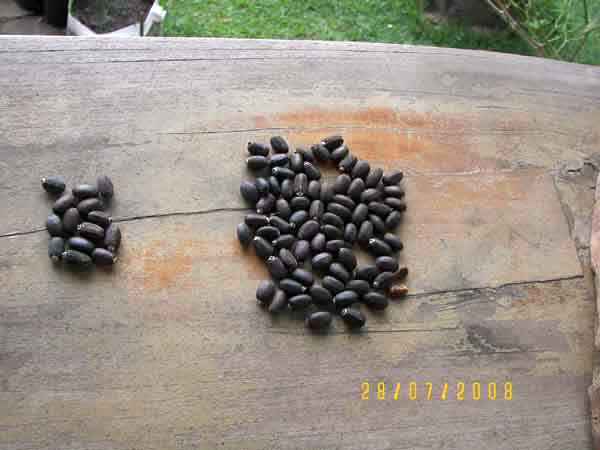
ROCK POWDERS AND SOIL FERTILITY
Igneous rocks contain a broad spectrum of up to 100 minerals and trace elements necessary for the well being of all life and the creation of fertile soils. Glacial moraine or mixtures of rock types applied to soils create a sustainable and superior alternative to the use of ultimately harmful chemical fertilizers, pesticides and herbicides. These minerals are slowly released and long lasting, as they must be weathered out of the crystals that contain them. The finer grained the material, the more rapidly they become available to soil and plant roots.
Rock powders act as fertilizers because their small grain size allows the mineral elements they contain to be readily released by the action of water, carbon dioxide, and organic acids released by plant roots and beneficial microorganisms. Finer materials have higher surface area and release their minerals more quickly. The greatest benefits are obtained on the most nutrient deficient soils. Rock dust amendments therefore are a strategy for improving soil fertility that mimic natural processes that are deficient in many places because elements essential to plant growth are deficient in the soil. Biochar can serve an important role to enhance the effect of rock powders because while Biochar is not a fertilizer per se, it acts to retain soil water and nutrients, making them available to plant roots and symbiotic fungi that provide plants with much of their nutrition.
ROCK POWDERS IN AGRICULTURE
Industrial agriculture uses primarily chemical fertilizers that are rapidly released. This means that they can be oversupplied with regard to the plant’s ability to take them up, so that the excess is lost. contaminating groundwaters and rivers. Therefore they last a short while, and must be continually added. Chemical fertilizers are expensive because of the large amount of fossil fuel energy used in their manufacture, especially for nitrogen fertilizers. They consist largely of nitrogen, phosphorus, and potassium, but healthy plants need many other essential trace elements as well.
Organic agriculture uses composted organic material, containing nitrogen and phosphorus in organic form, to replace chemical fertilizers. These are released more slowly than inorganic chemical forms, and so are longer lasting. However if the organic material is deficient in other elements, those are not added. This is where rock powders can make an enormous difference.
Most agriculture is based on mining soil nutrients, and are constantly depleting soil fertility as essential elements are removed via crops and erosion, and not replaced. Rock powders provide a natural way to replenish soil fertility.
Soil Remineralization (SR) has been shown in scientific studies to increase yields as much as two to four times for agriculture and forestry (wood volume), and to have immediate results and long term effects with a single application. Basalt dust application at a rate of 150 tonnes per hectare to forest soils resulted in four times greater tree wood volume than controls after 24 years, and the benefits only tapered off after 60 years (Sauter & Foerst, 1987). Experiments with tree seedlings in pots showed that tree growth rates increased with the amount of basalt powder added (Bruck, 1992). See Figure 1. In Western Australia eucalyptus seedlings amended with granite dust grew five times faster than controls, and potting out time before transplanting was reduced from 5 months to 6 weeks (Oldfield, 1992).
Similar results are found with crop plants. Application of glacial moraine dust to Michigan soils raised maize yields from 25 bushels/acre to 65 bushels/acre, and greatly increased its nutritional value. Protein increased by 28%, Calcium by 47%, Phosphorus by 57%, Magnesium by 60%, and Potassium by 90% (Hamaker, 1992). In highly weathered tropical soils that are very nutrient deficient the responses can be even greater. These poor soils predominate in Africa, South America, tropical Asia, and Australia.
–
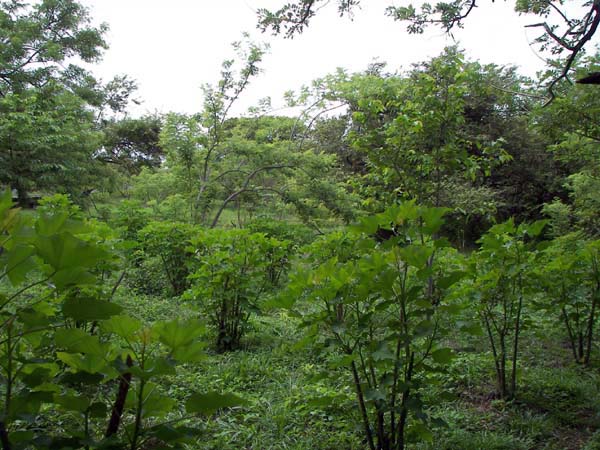
Remineralize the Earth’s Agroforestry Project in Costa Rica: Food, Fuel, and Income to Sustain Local Communities, designed by John Todd of Ocean Arks International, is a model project intercropping native commercial hardwoods, fruit trees, and Jatropha (a sustainable biofuel producing oil plant) on abandoned cattle pastures in the Guanacaste region using basalt rock dust from a local quarry (Todd, 2008). Over a thousand trees of more than 20 species were planted. Half of the trees received three kilograms of basalt rock powder. Jatropha receiving rock dust produced larger and more bountiful seeds. The trees grew more vigorously. Duplicating this experience in Kenya and other parts of Africa with sustainably intercropped Jatropha as a biofuel could replace firewood harvesting and expensive imported kerosene in rural areas. It could provide sustainable livelihoods in areas now severely damaged by drought, desertification, and hunger. Marginal soils planted with Jatropha could be restored to agricultural food production in a few years.
Millions of tons of appropriate rock dust for soil and forest regeneration are stockpiled by the gravel and stone industries worldwide as a non-toxic and inexpensive byproduct that can be used on a regional basis. While rock powder is a bulky item, and so the cost at remote locations largely reflects transportation costs, this is also true for chemical fertilizers or organic mulches. In contrast to chemical fertilizers, rock powders are a natural material, not a synthetic one, so production costs are much lower than
for chemicals that must be extracted and refined into pure form, or synthesized, like ammonium or urea.
BENEFITS OF ROCK POWDERS
* Provides slow, natural release of elements and trace minerals.
* Increases the nutrient intake of plants.
* Increases yields and gives higher brix reading. Brix is the measure of dissolved solids in the sap of plants of their fruits that
correlates with greater nutritive value.
* Rebalances soil pH.
* Increases the growth of microorganisms and earthworm activity.
* Builds humus complex.
* Prevents soil erosion.
* Increases the storage capacity of the soil.
* Increases resistance to insects, disease, frost, and drought.
* Produces more nutritious crops.
* Enhances flavor in crops.
* Decreases dependence on fertilizers, pesticides, and herbicides.
A BRIEF HISTORY
Remineralization has mainly been researched and explored by three distinct groups:
* First, German nutritional biochemist, Julius Hensel, pioneered SR in the 1880s with his book Bread from Stones and a modest agricultural movement came into being. Following his contribution, many scientists have done research on SR since the late 1930s in Germany and Central Europe for agriculture and forests, including one 60 year study of a forest.
The technology was not available at the turn of the century to produce finely ground rock dust, so SR, as promoted by Hensel, could not be produced feasibly on a large scale. SR was revived about 40 years ago in Europe. Many rock dust products for agriculture, forestry and sewage sludge treatment have been created in Germany, Austria and Switzerland in the last several decades and have been successfully marketed. Companies such as Lava-Union (Germany), Sanvita (Austria) and Bernasconi (formerly known as Zimmerli, Switzerland), along with many others as well as the Natural Stone Industry (Die Naturstein Industrie) based in Bonn, Germany have also done a great deal of research.
More recent researchers include Peter von Fragstein at the University of Kessel, Germany, who has researched remineralization
as a slow-release fertilizer with many different rock types and to deter insects. In the short term, rock dust sprayed on plants deters insects and in the long term silica in rock dust strengthens plant tissue (which contain silica granules called phytoliths) and makes them less susceptible to drought, insects, and diseases (Fragstein, 1995). The Carl Duisberg Gesselschaft e.V., in partnership with the Technische Universität Berlin, the University of Abidjan, the Societe pour le Developpement Minier de Cote d’Ivoire and the German Federal Ministry of Cooperation organized regional workshops in the Ivory Coast in 1991 on Rock Fertilizers: A Chance for West Africa’s Food Production.
* Second, is the more recently developed field of agrogeology. This research has been carried out mainly in Canada, Brazil, Tanzania, the Canary Islands, and West Africa–especially on laterite soils. Because of the intense tropical rainfall, NPK fertilizers are washed out in only a few weeks and cannot be stored by the soils, and are especially harmful to the groundwater. Rock fertilizers not only give nutrients over longer periods to cultivated plants, but also improve the ion-exchange-capacity of soils by forming new clay minerals during the weathering of the fertilizer. Researchers include William Fyfe, Ward Chesworth, Peter van Straaten, Suzi Theodoro and many others. The First International Conference on Rocks for Crops was held in Brasilia in 2004.
* Third, the grassroots movement concerned with the premise of John Hamaker in the book The Survival of Civilization, co-authored with Don Weaver, asserts that SR (soil remineralization) is not only the key to restoring soils and forests, but in the larger context, absolutely necessary and urgent to reduce levels of carbon dioxide in the atmosphere and stabilize the climate. Especially recommended are rock gravels and glacial moraine from glacial deposits which provide the most natural mixtures of rocks with the broadest possible spectrum of minerals and trace elements, as well as many hard silicate rock types. This movement began with Hamaker’s writing in the early 1970s and expanded in the 1980s into a global grassroots community consisting of ecologically concerned individuals and organizations, farmers and gardeners, scientists and policy makers. The Seer Centre has ongoing demonstration plots in Scotland.
On May 24, 1994, the U.S. Department of Agriculture (USDA) (Beltsville, MD), the U.S. Bureau of Mines (USBM) (Washington, DC), the National Stone Association (NSA) (Washington, DC), and the National Aggregates Association (NAA) (Silver Spring, MD) and the nonprofit organization Remineralize the Earth co-sponsored a forum on “Soil Remineralization and Sustainable Agriculture” at the USDA Agricultural Research Station in Beltsville, MD.
The Forum brought together the by-product rock fines generating industry and the proponents of SR to explore environmentally-sound uses of rock fines and to identify the state of the science supporting their use and the gaps in knowledge
that need to be filled.
The USDA began a series of demonstration trials with rock fines (from Georgia, Maryland and New York) and other industrial by-products. Dr. Ronald Korcak, research leader of the fruit lab, directed the trials over a three-year period. They are also beginning to research the use of rock dust in compost under the direction of Dr. Larry Sikora. The U.S. Bureau of Mines designed a prototype for a GIS (Geographic Information Systems) database to target soils in most need of SR and their distance from regional sources of rock fines to calculate transport costs and marketability of specific rock fines. The National Aggregate Association created a Task Force on Remineralization exploring the possibilities for creating sustainable products for agriculture, forestry and other uses. Research projects are currently underway at universities and as part of research and development programs of some of the largest aggregate companies in the US, Europe and Australia and through organizations such as Men of the Trees in Australia.
RECENT DEVELOPMENTS
-Remineralize the Earth was invited by the State Department to sponsor an Official Side Event at the Washington International Renewable Energy Conference 2008 (WIREC)
-In September 2009 a conference on remineralization was held in Brasilia, the Primeiro Congresso Brasileiro de Rochagem, attended by 170 participants.
-The Real Food Campaign is working with farmers, consumers and retailers to increase the production and availability of crops with much higher levels of nutrition through targeted remineralization practices. This is being done through speaking at conferences, developing numerous bimonthy workshops across the Northeast US to support and educate farmers in nutrient dense crop production, a sophisticated website delineating principles practitioners, standards and support.
IMPROVING FOREST HEALTH WITH ROCK POWDERS
As can be seen from the large annual wiggles in the graphs of rising concentration of atmospheric CO2, the world’s forests contain and cycle an immense amount of carbon. The role of forests as either sources or sinks in the carbon cycle depends upon the degree to which plants and soils are managed, protected, or disturbed. Land management methods that improve the health of trees and fertility of soils are likely to create forests that both sequester carbon and provide a sustainable, renewable set of resources for any given region.
In recent years foresters have reported elevated levels of tree decline and dieback in many forested regions of the world. While climate change is often implicated in forest declines, as in the recent pine bark beetle outbreaks in the western US and Canada, a closer examination points to land management practices such as fire suppression as having major influences in the health and susceptibility of trees to diseases and pests. In California, for instance, a tree disease called Sudden Oak Death is devastating oak forests around the state. Oaks are a fire-adapted species that benefit from periodic fires that act to reduce the competition and re-mineralize the soils. Decades of strict fire protection measures in California’s forests have created a situation where the oaks have become stressed and susceptible to disease. Indeed, studies now show that in the oak forests that have burned within the past 50 years the incidence of Sudden Oak Death disease is “extremely rare”[i].
These findings have fueled the debate among those who wish to continue the prevention of fires to protect property and to avoid exceeding regional air quality standards and those that wish to expand the use of prescribed fires to improve the health of their land and trees. But this debate may well be unnecessary. Knowing that fire suppression leads to excess competition and soil acidification in fire-adapted oak and pine forests, foresters are devising a suite of tending practices that fall into the category of “fire mimicry”[ii]. Practices such as thinning stands, clearing brush, pruning trees, and amending soils with mineral fertilizers tend to mimic the effects of fire, but without all the smoke and flames.
There is a growing body of scientific evidence showing that tree health and productivity can be significantly enhanced by additions of calcium-rich mineral fertilizers to the soils. Trees and other woody plants need lots of calcium for building healthy wood and bark. Forests in decline are often found to have acidic soils that are depleted in calcium. Cornell scientists tracking the effects of a declining sugar maple forest treated with calcium-rich minerals (wollastonite) dropped from helicopters found improved crown density of mature trees, as well as enhanced seedling numbers, survivorship, and size in the treated sugar maple stands compared to untreated stands[iii]. Scientists in California have observed that amending the soils of declining oaks forests with a calcium-rich rock dust (AZOMITE® Soil Sweetener[iv]) in combination with other fire mimicry practices results in significant improvements in crown density and leaf longevity2.
Mineral fertilizers are in common use in agriculture all around the world. They tend to be readily available and relatively inexpensive. Improving forest health and, therefore, carbon storage through additions of these mineral fertilizers is clearly feasible under certain conditions. Studies are now needed to determine the limits of feasibility of soil re-mineralization techniques in improving tree health and augmenting carbon sequestration in forested areas, especially in those forests that are showing decline.
Links-
http://www.treesearch.fs.fed.us/pubs/26610
http://www.suddenoaklife.org
http://suddenoaklifeorg.wordpress.com/files/2009/07/tep-paper-final.pdf
http://www.hubbardbrook.org/research/longterm/calcium/fahey07.htm
http://www.azomite.com
ROCK POWDERS, BIOFUELS AND CARBON SEQUESTRATION
Efforts to mass produce biofuels have had profoundly negative side effects by converting native forests to plantation monocrop agriculture, and displacing farm land used for food production. Remineralization can contribute to renewable energy sources by restoring the fertility of degraded lands to allow sustainable production that does not compete with food supplies or damage native forests.
It can also contribute to sequester CO2 by increasing biomass of living vegetation, and of roots and beneficial soil microorganisms, particularly if applied to reforestation and agroforestry on degraded lands. In addition the chemical weathering of rock dusts serves as a CO2 sink in its own right.
CONCLUSION
Soil Remineralization will create abundance in an era of diminishing resources and shift us away from fossil fuels.
Remineralization is nature’s way to regenerate soils, and is needed on a large scale because mismanagement is causing us to lose soils far faster than they can naturally regenerate. The techniques are simple, easily and intuitively learned, and can be rapidly scaled up at the community level. The materials are readily available and an inexpensive byproduct wherever there is building and road construction using stone aggregates or concrete. No extra energy is needed to grind them up since it is a waste product of gravel plants. Hard silicate rocks are the most abundant resource on earth. Millions of tons are readily available for the cost of transportation, and much more could easily be produced from existing rock crushing plants. Remineralization is an essential tool for sustainable development, economic empowerment, and social justice by creating a local nutrient dense food supply for all, and will improve health and generate livelihoods within local communities. It can play a critical role in overcoming hunger and poverty, ecological restoration, carbon sequestration and climate stabilization.
REFERENCES
-Bruck, R., 1992, Preliminary results for the soil remineralization forestry trials on Grandfather Mountain in North Carolina, Remineralize the Earth, 3: 9-10
-https://www.remineralize.org/joomla/index.php?option=com_content&task=view&id=94&Itemid=48
-Fragstein, P. v., 1995, Silicate Rock Dusts as Natural Fertilizers, p. 73-76 in J. Campe (Ed.) Remineralize the Earth, Northampton, Massachusetts
-Hamaker, J. D., 1977, Remineralization and increased nutrient density for corn,
-https://www.remineralize.org/joomla/index.php?option=com_content&task=view&id=93&Itemid=48
-Hamaker, J. D., & D. Weaver, 1982, The Survival of Civilization, 219p., Hamaker-Weaver Publishers, Michigan
-www.remineralize.org/don/synopsis01.html
-Hensel, J., 1982, Bread From Stones: A New and Rational System of Land Fertilization and Physical Regeneration, republished by Acres USA, Austin, Texas
-Oldfield, B., 1992, Soil improvement: The step beyond conservation, Remineralize the Earth, 3: 8-10
-https://www.remineralize.org/joomla/index.php?option=com_content&task=view&id=95&Itemid=48
-Sauter, Von U., & K. Foerst, 1987, Hinweise fur den Einsatz von Silikatgesteinsmehlen zur Waldbodenverbesserung, Der Forst- und Holzwirt, 42: 27-30
-https://www.remineralize.org/joomla/index.php?option=com_content&task=view&id=92&Itemid=48
-Todd, J., 2008, Restoring the land: Building durable economies, ANNALS OF EARTH, 26: 14-15
-Todd, J., 2007, Creating world class soils, ANNALS OF EARTH, Vol. 25, #1, 2007. pp 22-24
-US Department of Agriculture, 1994, Soil Remineralization and Sustainable Agriculture
-Van Straaten, P., 2006, Farming with rocks and minerals: Challenge and opportunities, Anais da Academia Brasileira de Ciencias, 78: 731-747
-https://www.remineralize.org/joomla/index.php?option=com_content&task=view&id=29&Itemid=48
-Van Straaten, P., Rocks for Crops: Agrominerals of sub-Saharan Africa
-http://www.uoguelph.ca/~geology/rocks_for_crops/
-World International Renewable Energy Conference, 2008, Proceedings and Green Pledge,
-www.wirec2008.gov/wps/portal/wirec2008
-www.ren21.net/wiap/wirec.asp
-www.ren21.net/wiap/detail.asp?id=327
-Yeomans, A. J., 2005, Priority One: Together We Can Beat Global Warming, 500p., Keyline Publishing, Australia
-http://www.yeomansplow.com.au/priority-one.htm
ORGANIZATIONS AND LINKS
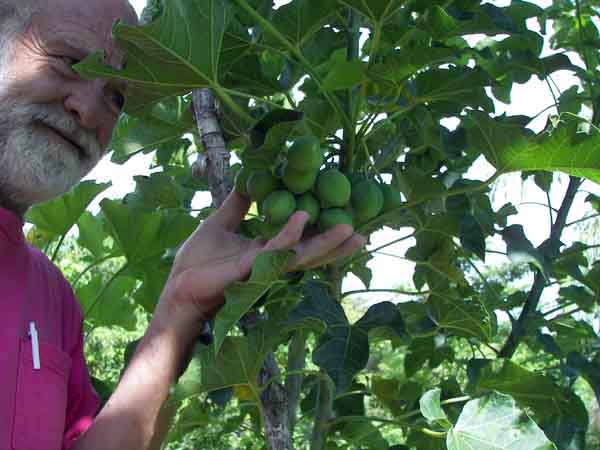
Remineralize the Earth raises public awareness of the role that soil remineralization with finely ground rock dust, sea minerals and other natural means plays in agriculture by increasing the growth, health, and nutrient value of all plant life, reversing global desertification through agroforestry and reforestation, producing sustainable biofuels, sequestering carbon, and stabilizing climate. RTE promotes partnerships with foundations and educational institutions, government agencies, international development agencies, the private sector, and NGOs.
www.remineralize.org
The Real Food Campaign organizes networks and promotes healthier nutrient-dense foods for our food supply through
remineralization.
www.realfoodcampaign.org
Rocks for Crops works in Africa to improve agriculture through the utilization of natural geological materials.
www.uoguelph.ca/rocks
First International Rocks for Crops Conference 2004 abstracts and papers can be found at
www.uoguelph.ca/rocks
Primeiro Congresso Brasileiro de Rochagem 2009 presented research on advances in rock powder fertilization in agriculture.
www.congressorochagem.com.br
Renew the Earth encourages international exchange of ideas, information, and actions in the transition from a fossil fuel based economy to one increasingly reliant on sustainable energy and water.
www.renew-the-earth.org
Seer Centre is committed to regeneration of soils with rock dust to remineralize the soil to benefit the grower and the environment, and operates a demonstration garden and farm.
www.seercentre.org.uk
Ocean Arks International specializes in ecological water purification technologies, and disseminates ideas and practices of ecological sustainability and design worldwide. They explore linkages between ecology and economics to create new kinds of work and enterprises out of environmental protection and restoration initiatives.
http://www.oceanarks.org
About The Authors-
Joanna Campe
Joanna Campe is the founder and Executive Director of Remineralize the Earth, Towards a Sustainable Agriculture, Forestry and Climate (www.remineralize.org), an international NGO based in Northampton, MA, USA. The website facilitates the networking of a worldwide grassroots movement concerned with regenerating soils, forests, health and as a key strategy to stabilize the climate through remineralization.
She has collected research on remineralization from all over the world, co-produced a documentary film and networked to gardeners, farmers, policy makers and scientists since 1984, co-organized a symposium at the USDA headquarters with the USDA-ARS (1994) and Stone and Aggregate industries and coordinated a two year research project 1995-1996, (UMass, Hampshire College). She was invited by the State Department to speak at the Washington International Renewable Energy Conference (WIREC 2008). She most recently directed an agroforestry demonstration project in Costa Rica: Sustaining Local Communities with Food, Fuel and Income with ecological award winning designer and scientist, John Todd, of Ocean Arks International (OAI) and has been a speaker at conferences in the U.S. and Europe, in Central and South America and made radio and television appearances to promote remineralization worldwide.
Dan Kittredge
Dan Kittredge’s mission is to revitalize denuded lands and maximize yields and production in agriculture with a biological systems approach to soil science principles. He is applying 20 years of agricultural experience in the organic farming movement.
He is director of the Real Food Campaign, a project of Remineralize the Earth, which coordinates and supports all programs that produce healthier and more nutrient dense crops for our food supply. It coordinates nationwide crop education and implementation of biological soil management principles. He is creating a nationwide research project database documenting increases in crop yield and quality through coordinating and networking with biological soil consultants, sustainable agriculture organizations, land grant universities, and the USDA/ARS. He is developing a nutrient dense food quality standard in collaboration with top thought leaders in the field of soil science and biological soil management.
He was the Executive Director of Remineralize the Earth for two years (2006-2008) and is an active member of the Board of Directors. He has managed and consulted with numerous organic and biological farms across the US. He has been a consultant with the Biomass Coordinating Committee (BCC), of the American Council on Renewable Energy ACORE, the Mantria Place Project, Tennessee, and a presenter/speaker at the Washington International Renewable Energy Conference (WIREC 2008), NOFA Annual Conference, UMASS (2005-2008), Soil Management Seminar, RETECH2009 and Ecological Farming Conference, 2009, Asilomar, CA, and many others.
Dr Lee Klinger
Dr Lee Klinger is an independent scientist and consultant living in Big Sur, California. He specializes in the development and implementation of land practices aimed at improving the health of forests and soils. His experience as an environmental scientist at major institutions in the US, UK, and China spans more than 25 years. Dr Klinger has more than 50 peer-reviewed publications in the fields of forest ecology, soil science, atmospheric chemistry, geology, and systems theory; and has held scholarly appointments at the National Center for Atmospheric Research, the University of Colorado, the University of Oxford, and the Chinese Academy of Sciences.
Besides his ongoing research in applied ecology and acid rain, Dr Klinger conducts workshops in ethnobotany and native tree care. He is often invited to speak at local colleges and at professional gatherings of arborists, foresters, and organic farmers in the US and abroad. He is a fellow of the Geological Society of London and charter member of the Gaia specialty group. Dr Klinger sits on the advisory boards of several environmental non-profits including Sudden Oak Life and Teleosis Foundation.
Support us on Patreon
Thank you for joining us today! Please become a member of RTE and support us on Patreon. Unlike many larger organizations, we work with a team of determined and passionate volunteers to get our message out. We aim to continue to increase the awareness of remineralization to initiate projects across the globe that remineralize soils, grow nutrient dense food, regenerate our forests’ and stabilize the climate – with your help! If you can, please support us on a monthly basis from just $2, rest assured that you are making a big impact every single month in support of our mission. Thank you!

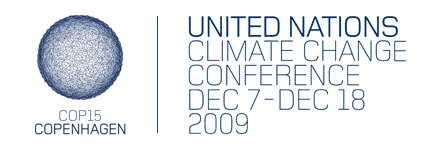
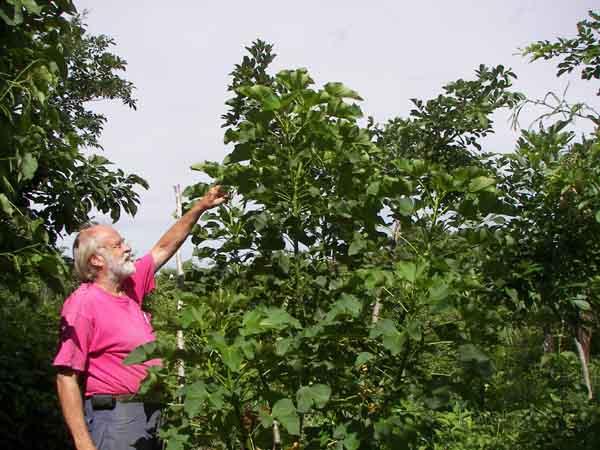






JAMES KAGOTHO
January 6, 2016 (3:48 pm)
EXCELLENT WORK. WHERE CAN I GET BASALT ROCK POWDER IN KENYA. PLEASE ASSIST ME.
Joanna Campe
February 20, 2017 (9:26 pm)
Please download the rock dust primer and this will help you look for local sources. Please feel welcome to email us from the website.
TIBANE KGATLHE
July 9, 2021 (5:23 am)
Hi!! I’m Tibane Kgatlhe from South Africa, I’m a vegetable farmer.
Can any rock remineralize the soil?
Joanna Campe
July 25, 2021 (11:59 am)
Hi Tibane,
Please have a look at our Rock Dust Primer, which you can download from the home page of this website (or at this link https://www.remineralize.org/a-rock-dust-primer/). It will let you know which rock dust is most suitable for your situation.
My best,
Joanna
Ruy de Araújo Caldas
January 17, 2022 (12:39 pm)
Excellent work, in Brazil in do need a long range program on remineralization on the poor soils of the cerrado areas ( savana like)